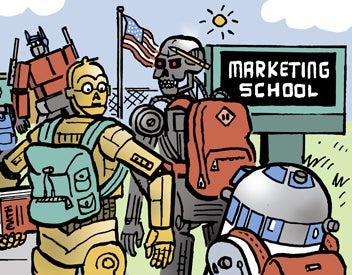As part of an effort to become a more customer focused one-to-one company, General Motors is uniting its vast online holdings under a centrally integrated presence dubbed e-GM. Under the plan, the big-three automaker says it will roll out a broad range of online services aimed at fending off growing online competition while making the company a more effective Web marketer.
For starters, GM says it plans to create a single supersite that will allow customers to efficiently click through to whichever part of the company they wish to do business with. At present, users are faced with navigating a maze of sites – often running on different servers – to plod from one business unit to the next.
“There’s a GM Web site, there’s a Pontiac Web site, and there’s GMBuypower.com,” says Harley Manning, a research director at Forrester Research, in Cambridge, MA. “If every business unit builds its own technical infrastructure, you get into major integration issues just to do something fairly simple,” he notes. “The customer has no idea this is going on – all they know is that, starting at GM.com, it takes you seven clicks to get to a Pontiac Firebird, and during those seven clicks you go through three different interfaces if you decide you want to buy the Firebird.”
As part of its retooling, GM says it also wants to move from a manufacturing model based on mass production to one that employs mass customization principles first deployed in the company’s Saturn unit. Taking this concept further, GM insiders say orders from the Internet could be fed directly to the production line, where workers would assemble cars according to customer specifications using pre-manufactured components. Toward this effort, GM is counting on an invigorated Web presence to capture the type of customer information required for CRM and one-to-one marketing.
That strategy provides yet another incentive for GM – whose officials did not return repeated phone calls – to maintain strong dealer relationships. Because car manufacturers are prohibited by law from owning dealerships, they count on their dealer networks for customer information.
“What everyone was afraid of was disintermediation,” says Manning. “Yet if we look at it, the reverse is happening in this market segment. The dealer relationships are such that there is no way they are going to hose them. Plus there is no need. Look at Autobytel or Carpoint – there are dealers involved in that.”
Another key to GM’s e-strategy is the development of what it is calling a “Web car,” an Internet-enabled vehicle capable of pulling traffic data, maps and, presumably, marketing messages. Says one industry watcher: “Imagine driving on the highway; your car senses you’re low on fuel so it queries the GPS and then searches the Web for a nearby service station. Well, unless you’re in North Dakota it’s probably going to find a whole bunch. However, it’s only going to suggest one. Which one? Well, whoever is paying for that message to reach you.”
Meanwhile, some of GM’s competitors are themselves gearing up for enhanced online efforts. Ford Motor Co. last month announced that it is teaming up with Microsoft in a venture that will allow consumers to order a vehicle via the Internet. The idea is that, when an order is placed, Ford will build vehicles to customers’ specifications and steer customers to those dealers that have the models they want. And Toyota Motor Corp. is also now selling cars via the Web and claims it can deliver a custom Camry Solaras from a factory in Cambridge, Ontario, within five days of receiving the order.
 Network
Network

